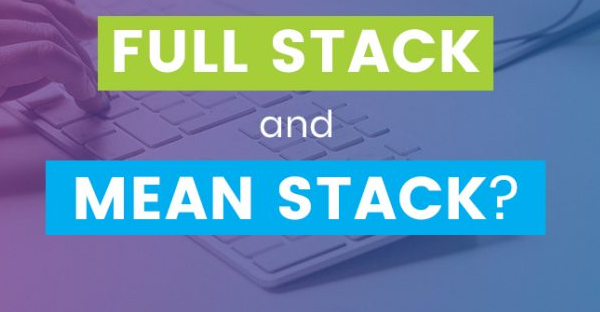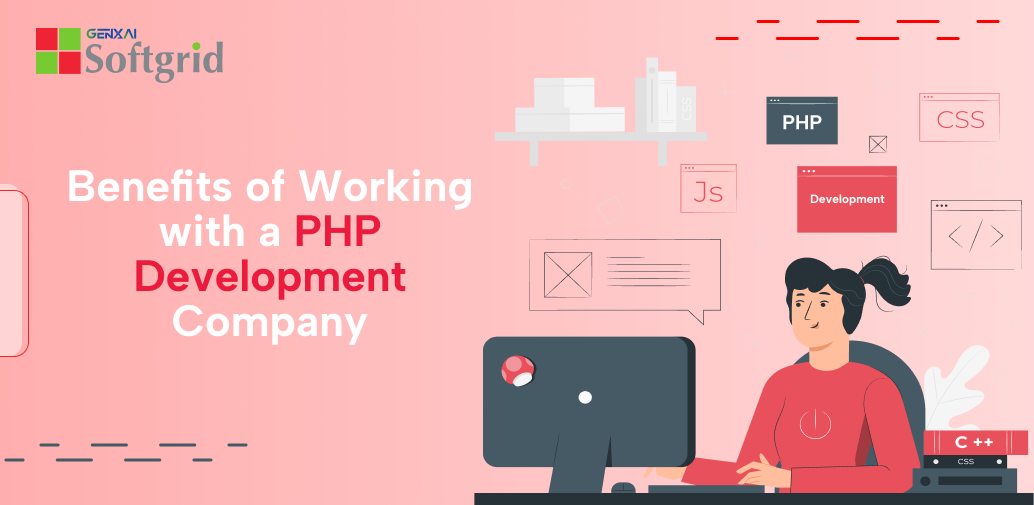Before we move into differentiating these two, it is important to understand what they mean, independently. Mean Stack and Full Stack Development are becoming the harbingers of the web-development revolution and with this revolution, there are a lot of advanced frameworks that have come into existence. Before we understand these two, for those of us who are still unfamiliar or new to these frameworks, let us first understand what a stack is. A stack can be broadly defined as a collection of software technologies, programming languages and products.
A technology stack, as the name suggests, is a list of technology services that are used for the execution and implementation of single use applications. An application stack, on the other hand, would represent a list of the application programs that are meant to work together to perform tasks in reality and the maintenance of these tasks with a seamless work-flow.
Why Full-Stack?
Full stack developers are becoming increasingly important in the web-development market place today. This is because they can be used for different purposes and also because the modern data network has shifted almost entirely into a digitised format. A full-stack developer would be open towards implementing technologies of open source and the knowledge of different frameworks required to implement strategies.
The foremost things that full-stack developers need to access, are the front-end and the back-end development. This also means that they are responsible for the overall design of the website. If you are a full-stack developer, that means that you are completely responsible and must absolutely be aware of the different functions that are related to website design, which sequentially can be categorised into atomization, deployment, application and lastly, optimization. The advantage that is associated with Full-stack development, is the fact that with this kind of development, it is almost imperative to have pre-existing knowledge about the different facets of website development and what developers might need to do, to work with this knowledge.
Full-stack developers need to have intimate knowledge about everything associated with the web. There are several leading companies today, that are using this method of development and with this kind of development, there are several designations within a company that a developer can opt for.
Components of Full-Stack
The components of Full Stack Development revolve around back-end and front-end development of applications.
Front End:
It is the visible part of the website which defines the user experience. This is the part that all users can see. The front-end portion of this website is dependent on a few languages, which are essentially to do with:
HTML:
This is perhaps one of the most common and well-known languages that we know. This uses mark-up language. HTML, very literally, is the combination between Hyper-text and Mark-up language. Hyper text is essentially the link between different pages and the mark-up language is required for defining the text documentation within tag, of course, between the structure of the web pages.
CSS:
CSS is responsible for the aesthetics of your webpage. It is the language that you will use, in order to be able to make your front-end more accessible, more presentable and more aesthetically pleasing. CSS allows you to apply styles to different web pages. In addition to this, it also allows for you to do this independent of the HTML that is required for the functioning of each web page.
JavaScript:
JavaScript is like the cool guy in the house. Used essentially to make your website interactive for the user, JavaScript is used to enhance the functionality of the website, in order to run promotional games and other really cool stuff, that you can make interactive for your users.
Back-End Development:
Back-end, pretty much like the name suggests, is what keeps your website running and functional. The part of your website that your users do not have access to. It is also responsible for managing your database through queries and API’s by client-side commands. The back-end aspect of this, is built using some libraries, frameworks and languages that we shall look at:
PHP:
This is perhaps one of the most popular server-side scripting languages that is designed specifically for any kind of web development.
C++
This is a generically used programming language and is now extensively being used for competitive programming.
Java:
One can really talk about Java as much anymore, as it is widely used in the market today. It is highly scalable and components of Java can easily be found and are easily accessible.
Why Mean-Stack?
Mean-Stack is essentially a collection of Java-script based technologies that are responsible for creating complex websites responsive mobile applications. Mean-Stack is a collection of open-source frameworks such as AngularJS and NodeJS, which are extremely popular frameworks for building websites with ease. One of the reasons why Mean Stack is most popular is because of the ease with which the app developer can transfer code to other frameworks. This drastically hastens the process of app development and allows for the procedure to take place with a lot less effort. Flexibility is the one thing that can be used for app development, when it comes to Mean Stack and when it comes to testing procedures and introductions, they can be done quite seamlessly using the JavaScript.
From a company’s perspective, this is a great opportunity because it is extremely cost-effective. This also means that a company can hire fewer developers when it comes to operationalizing their website, from start to finish. This can be called more low-maintenance, because the developer who is working with Mean Stack needs to have prior knowledge of only JavaScript and no other frameworks. This reduces the burden on both the developer as well as the company, in addition to the cost that the company would have to incur.
Let us discuss some of the components that make up Mean Stack for what it is:
ExpressJs:
This is a pretty basic framework for Node.js applications that are extremely efficient in building multi-page and single-page applications.
AngularJs:
AngularJS is an application which can also be called a Model-View-Control framework that is similar to the JavaScript framework that is used in the process of designing dynamic web applications and other kinds of applications which include business applications.
NodeJs:
This is a cross-platform and an open-source framework that is meant for developing networking and server-side applications. It is also meant to provide an extremely rich set of libraries which include different JavaScript models that can develop other applications with ease.
MongoDB:
This is a database, a highly complex database that is solely meant for storing large amounts of data. It makes optimum use of documents and collections and where documents use what is referred to as the key-value pair data in MongoDB, the collections aspect of it is meant to be a set of functions and documents that can quite closely resemble relational database tables.
As a leading full stack development company, we specialize in leveraging the MEAN stack to deliver exceptional web applications. We ensure flexibility and scalability in storing and managing data. By harnessing the power of the MEAN stack, we deliver high-performance web applications with a seamless flow of data and an exceptional user experience. Partner with us, the full stack development experts, to unlock the full potential of the MEAN stack and bring your ideas to life.

 Web and Full Stack
Web and Full Stack CMS and Frameworks
CMS and Frameworks Online Marketing
Online Marketing Cloud Services
Cloud Services ECommerce
ECommerce Mobile
Mobile



